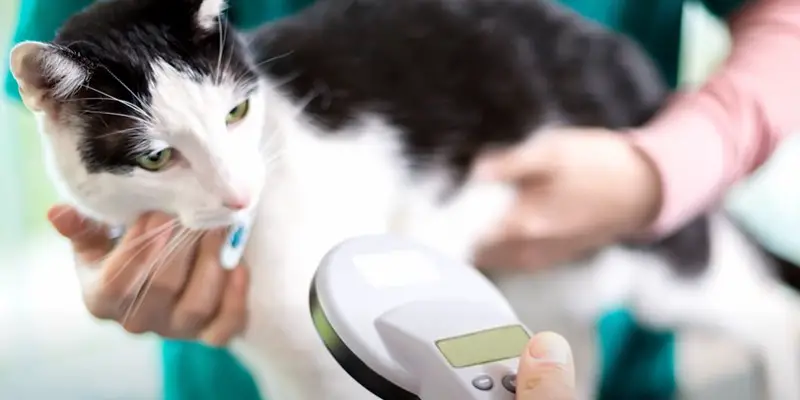Microchipping your pet is a simple, safe and permanent way to identify them if they’re ever lost. A microchip is about the size of a grain of rice and is implanted under your pet’s skin, usually between their shoulder blades.
The chip contains your contact information which can be read by a scanner that veterinary clinics and animal shelters have.
If your pet ever gets lost, someone who finds them can take them to a vet or shelter where the chip will be scanned and you’ll be contacted so you can be reunited with your pet.
If you’re a pet owner, chances are you’ve considered microchipping your furry friend.
What is microchipping and Why do it?
Microchips are tiny devices that are implanted under the skin of an animal. They contain a unique ID number that can be read by special scanners. If your pet becomes lost, a shelter or vet office can scan the chip and contact you to reunite you with your pet.
There are several reasons why microchipping is a good idea:
- It’s permanent – unlike collars and tags, which can fall off or be removed.
- Microchipping is universal – any shelter or vet office with a scanner can read the chip (as long as they have your contact information on file).
- It’s affordable – chips typically cost around $50 to register.
So if you’re on the fence about microchipping your pet, we say go for it! It’s a quick and easy way to give yourself peace of mind in case your pet ever gets lost.
Also Read: Best Microchip Cat Flap for Doors
How Do Pet Microchips Work?
Why Should I Microchip My Pet?
By microchipping a pet, the two most important things are safety and identification. If your pet ever gets lost, a microchip can be used to help reunite you with them. A microchip is a tiny computer chip that contains information about your pet and their owner.
The chip is implanted under the skin, usually between the shoulder blades. It’s quick and easy to do, and it doesn’t require anesthesia. Once your pet is microchipped, all you need to do is register the chip with a national database.
That way, if they’re ever found by someone else, their information will be readily available and you can be contacted as soon as possible.
Another reason to consider microchipping your pet is for identification purposes. If your pet were to ever escape from your yard or get out of the house without you knowing, having a microchip would greatly increase the chances of them being returned to you.
Animal shelters and veterinary clinics routinely scan animals for microchips so that they can quickly return lost pets to their owners. Even if you never plan on letting your pet out of your sight, accidents happen and it’s always best to be prepared.
Microchipping is a safe, permanent form of ID for your animal companion that could one day save their life – there’s really no downside!
What is the Purpose of Cat Microchip?
A microchip is a tiny computer chip that can be implanted in a cat’s body. The chip stores information about the animal, such as its owner’s contact information and medical history. Microchips are used to help reunite lost pets with their owners and to provide important health information for veterinarians.
How Long Does a Microchip Last in a Cat?
Microchips are a great way to help keep track of your cat in case they ever get lost. But how long do microchips last? Microchips are designed to last for the lifetime of your cat.
The chips are made out of durable materials that can withstand a lot of wear and tear. Additionally, the chips are encoded with special information that helps identify your cat if they are ever lost or stolen.
Can You Track Your Cat With a Microchip?
Yes, you can track your cat with a microchip. A microchip is a small device that is inserted under the skin of your cat. It contains a unique code that can be read by special scanners.
When your cat is lost, the microchip can be used to help find him and return him to you.
Reasons Not to Microchip Your Cat
There are a few reasons why you might not want to microchip your cat. One reason is that the chips can sometimes move around inside the cat’s body, which can make it difficult to scan them.
Additionally, if your cat ever gets lost, someone would need to have a scanner in order to find the chip and contact you – meaning that there’s no guarantee that you’ll be reunited with your pet.
Microchipping is an invasive procedure that requires breaking through the cat’s skin, which some pet owners may feel is unnecessary and cruel.
Conclusion
Microchipping your pet is a quick, painless process that can help ensure your furry friend always makes it home safely. If your pet ever gets lost, a microchip can be scanned by any vet or animal shelter and quickly reunited with you. Here’s everything you need to know about microchipping your pet.
His professional interests include humane education, ethics, small animal behavior, and veterinary. As a pet lover from school life, having grown up with two cats and a dog. If he isn’t spending time with his friends and family, Justin enjoys traveling. Learn more about Justin here.



